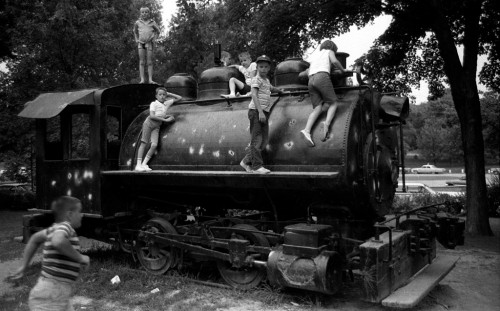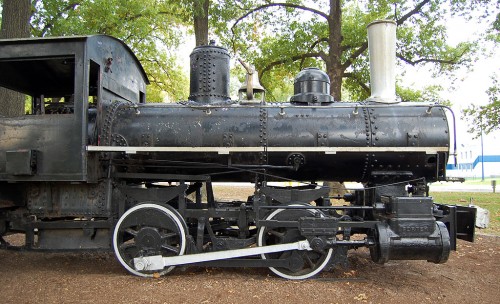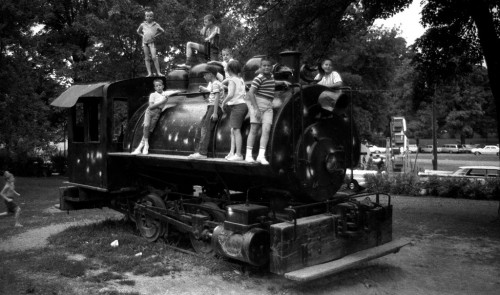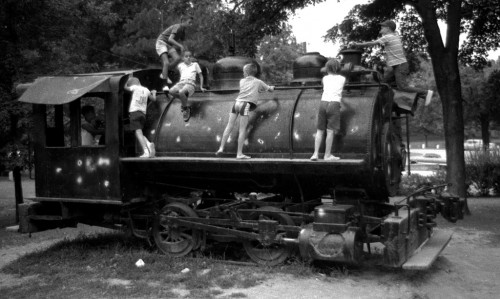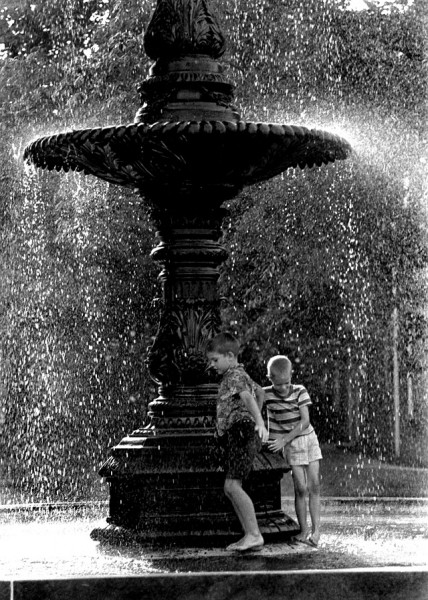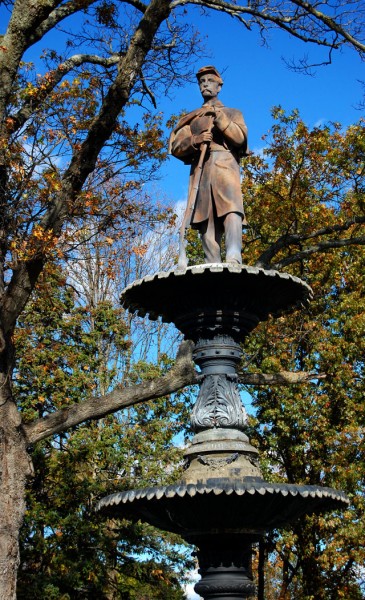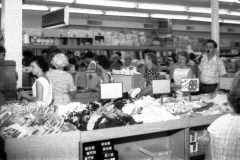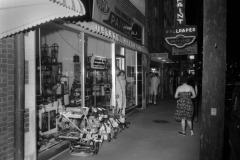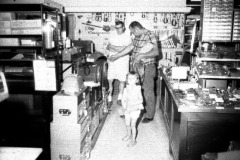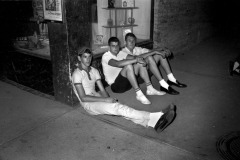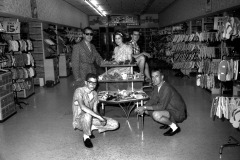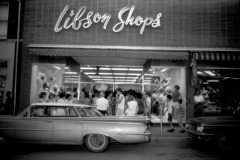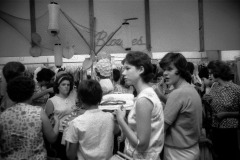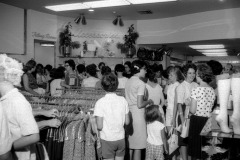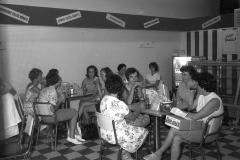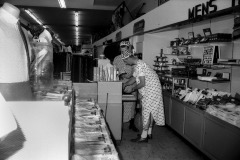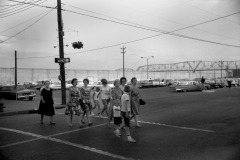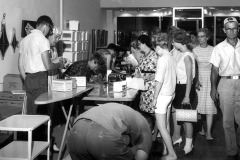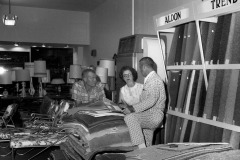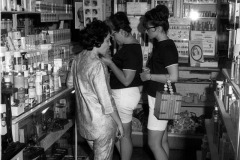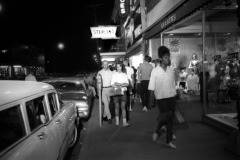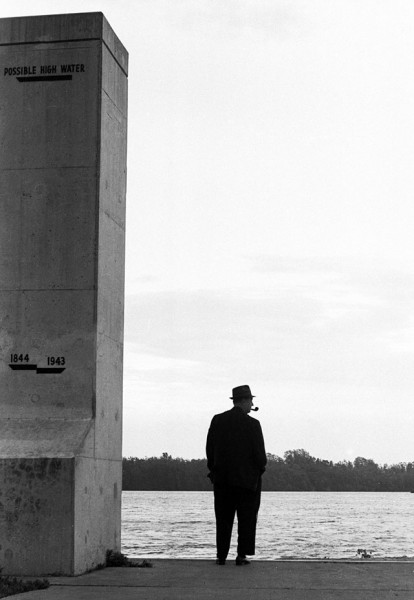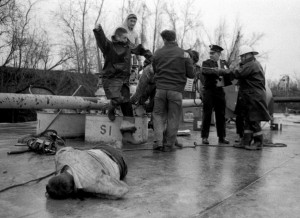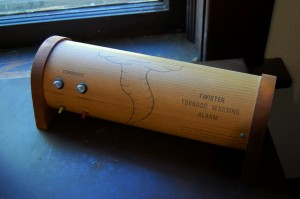I found a strip of negatives that had kids playing in the Capaha Park Pool, followed by four pictures of kids climbing all over a train locomotive.
I’m Cool
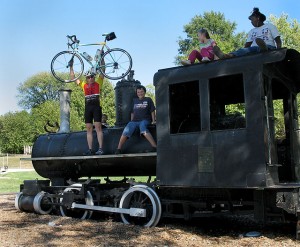 To my surprise, the kid on the left in the white shirt doing an “I’m Cool” pose was my brother, Mark Steinhoff.
To my surprise, the kid on the left in the white shirt doing an “I’m Cool” pose was my brother, Mark Steinhoff.
That brought to mind this picture I took of him in October 2007 lifting his bike above his head during one of our rides. (Don’t ask. He has this thing about holding his bike in the air. We try not to notice.)
Is it the same locomotive?
I was all set to proclaim it the same engine, except that it was facing in the opposite direction.
I knew that it had been worked over to make it safer and to take out asbestos several years ago, so I thought maybe it had been set up differently after it was fixed.
Then I looked more closely at the locomotive and determined that it didn’t look like the same one.
The boiler is skinnier, the older train didn’t have a skinny smokestack and the round objects on the top of the boiler are missing.
Is it the Arena Park Train?
Here’s a picture I shot of “Hoppy,” the train at Arena Park, in October 2008.
There are several similar features, but I don’t think it’s the train in the picture from the 1960s. If nothing else, look at the placement of the bell. It’s in the middle of the boiler, not the front like in the other two pictures.
If I had to guess, parts were changed on both trains when the engines were taken apart for modification and asbestos removal. I’m going back to my original opinion that the old photos were taken on the train in Capaha Park and that cosmetic changes were made sometime later.
Feel free to chime in if you know the real story.
I’d like to know more about what was done to the trains between the mid-1960s when I shot these pictures and the late 2000s when I revisited them. Train buffs are welcome to correct any errors in how I described the locomotives and their parts.
More park train pictures from the 1960s
I must have been kid-sitting that day. My brother, David Steinhoff is at the top left in the picture above
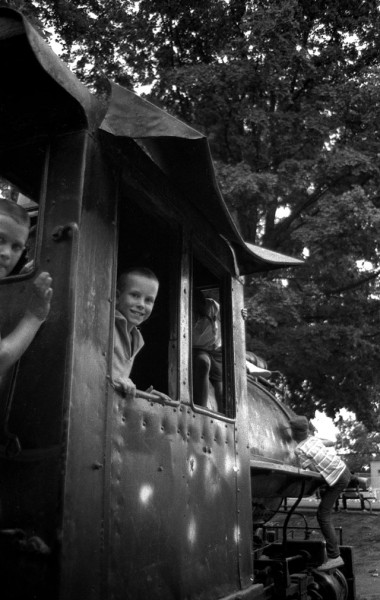 I loved those trains
I loved those trains
I loved climbing on those trains when I was a kid. Things that used to open and move have all been removed or welded to make them safer, but I don’t think it matters much to kids.
When I got too old to play on them, I’d come back on slow news days to bag some wild art. You could always count on finding someone playing engineer after school or on weekends.
I wonder if cities would even consider putting something like this on playgrounds these days. I never heard of a kid getting hurt, but there were plenty of sharp edges and levers that could potentially cut off a finger and the fire grate that could crush one.
It’s a wonder any of us survived those days.
I remember using the Arena Park train in a Back-to-School photo shoot for The Missourian’s Youth Page. I’m sure it’ll show up in my digging and I’ll have one more excuse to run some train pictures.

